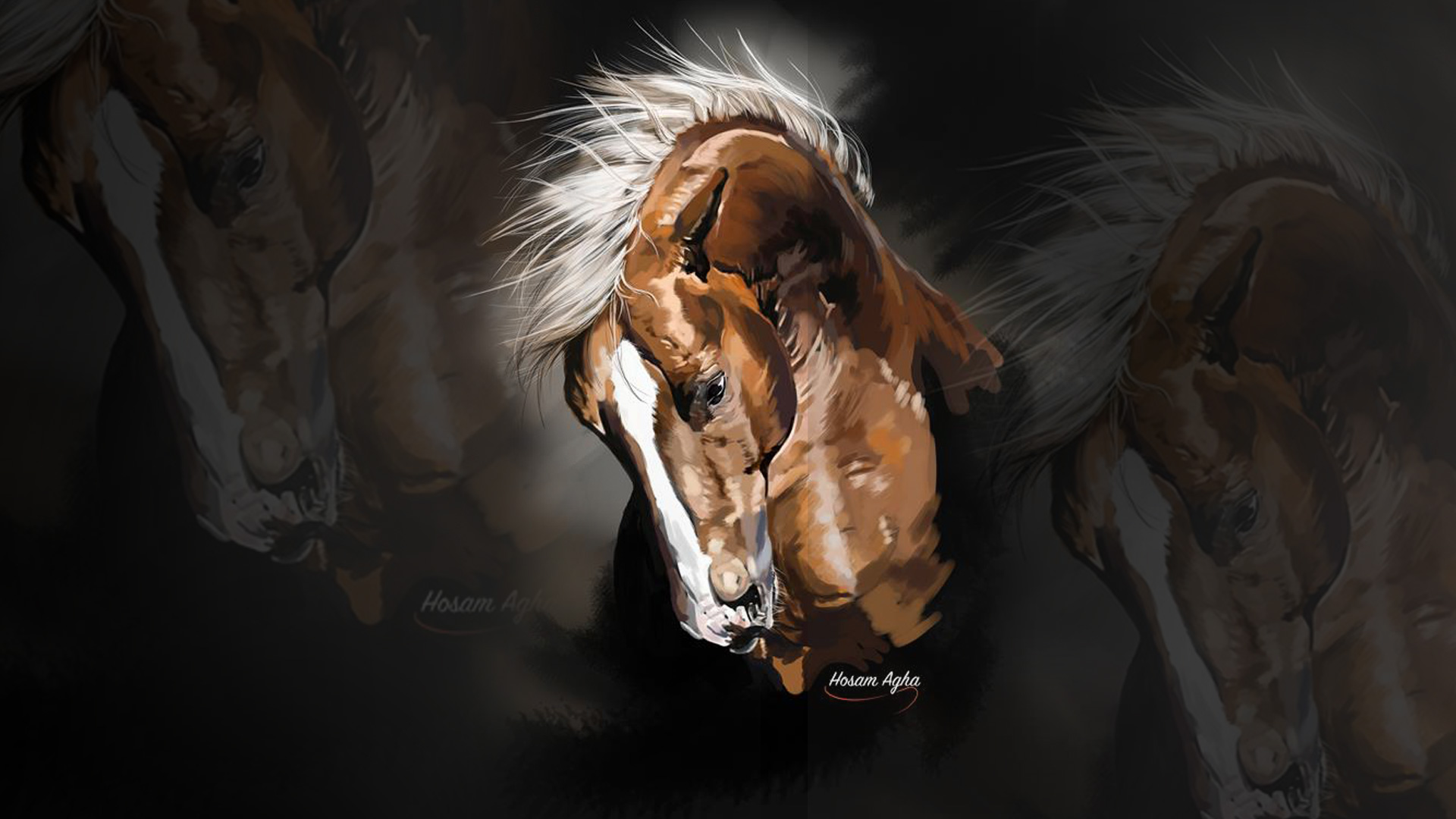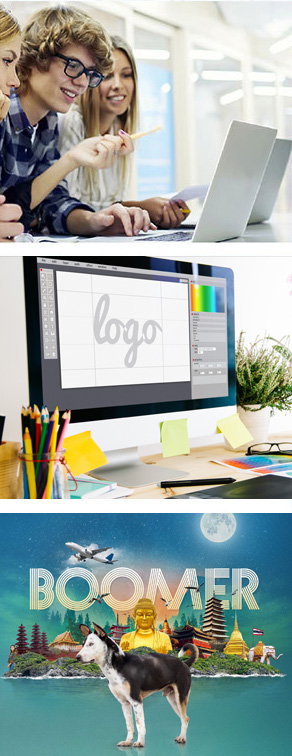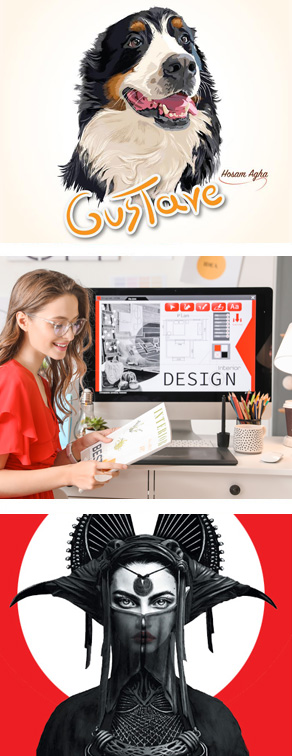




About
In Rosemount Technology Centre, Computer Graphic's program, students learn the essential graphic design skills and techniques that enable them to create complex designs for a variety of purposes, including print, digital media and web. With the use of the Adobe Suite software, mainly Illustrator, Photoshop, InDesign and Dreamweaver, students learn to manipulate visual content such as images, typography, and illustrations in order to produce and create everything from logos and business cards to advertisements and promotional material, websites and social media graphics.
RTC's Computer Graphics program will provide individuals with hands-on, practical experiences required to becoming a successful graphic designer, leading to a great career in the industry.
Here are some of the things you will learn:


The Computer Graphics program leading to a DVS is a 1800 hour course.
Day program (6 hrs/day):
approximately 18 months.
Evening program (5 hrs/evening):
approximately 22 months.
| Program Competencies | Hours | Credits | |
|---|---|---|---|
| 1 | Occupation and Training Learning about the reality of the occupation; having an understanding of the program of study and confirming career choice. |
15 | 1 |
| 2 | Managing a Computer Environment Installing computer peripherals as well as installing, updating, and troubleshooting minor software problems; creating local folders, saving, exchanging, and classifying files; making sure the workstation is set up ergonomically. |
60 | 4 |
| 3 | Vector Images Identifying the characteristics of Adobe Illustrator, as well defining the document’s properties; drawing typographic elements, shapes, patterns and converting vector objects; assessing the quality of the illustrations. |
105 | 7 |
| 4 | Raster Images Customizing images using Adobe Photoshop, as well as defining the document’s properties; organizing layers, channels, paths, and retouching the images; assessing the quality of the manipulated photos. |
90 | 6 |
| 5 | Requirements and Steps of the Graphic Communication Production Process Learning about the reality of the occupation; having an understanding of the program of study and confirming career choice. |
90 | 6 |
| 6 | Image Acquisition Searching within image banks and scanning for visual elements; taking and archiving digital photographs. |
90 | 6 |
| 7 | Colour Profile Management Characterizing the colours of projection devices; creating and synchronizing colour profiles within the graphic chain. |
60 | 4 |
| 8 | Composite Images for Standard Printing Producing a photomontage by searching or creating the images; standardizing the photomontage to the requirements of multiple forms of printing. |
90 | 6 |
| 9 | Composite Images for Visual Interfaces Producing a photomontage by searching or creating the images; standardizing the photomontage to the requirements of electronic distribution. |
90 | 6 |
| 10 | Tools for Proofreading English Texts Doing initial read-throughs; identifying typographical and spelling errors, grammatical mistakes and simple punctuation errors; consulting reference materials and interpreting suggested corrections. |
60 | 4 |
| 11 | Typographic Elements Acquiring, proofreading and applying typographical rules to the text; developing and finalizing typographic style sheets. |
90 | 6 |
| 12 | Simple Page Layouts for Print Documents Producing two-sided page layout documents by preparing and incorporating the text as well as visual elements. |
105 | 7 |
| 13 | Simple Page Layouts for Visual Interfaces Producing multiple pages for visual interfaces by preparing and incorporating the text as well as visual elements; testing of the functionality of the elements in the visual interface (HTML, CSS, Dreamweaver). |
105 | 7 |
| 14 | Simple Page Layout Templates for Visual Interfaces Assembling a page layout template for visual interfaces by preparing the technical specifications and incorporating the text as well as visual elements; building and testing of the page architecture and the functionality of the elements in the visual interface. |
90 | 6 |
| 15 | Page Layout Templates for Print Documents Producing multiple page layout documents by preparing the technical specifications and optimizing the typographic composition as well as visual elements; assembling the page layout template. |
90 | 6 |
| 16 | Imposition and Finishing Planning the imposition and finishing; producing an imposition and finishing template; assembling and verifying a prototype. |
60 | 4 |
| 17 |
Complex Page Layouts for Print Documents Learning about the reality of the occupation; having an understanding of the program of study and confirming career choice. |
105 | 7 |
| 18 | Document Rasterization Organizing the production’s work flow and rasterizing the document with client approval. |
60 | 4 |
| 19 | Preparing Documents for Digital Printing Assembling a document using variable data and generate a portable digital file as per specifications; producing a proof for verification. |
60 | 4 |
| 20 | Preparing Documents for Standard Offset Printing Evaluating the press proof based on the projects specifications; identifying trapping and use of color guides; assembling a document for offset printing, producing a RIP proof for verification. |
75 | 5 |
| 21 | Managing a Graphic Communications Microbusiness Planning a personal career path and seeking out business opportunities; preparing and presenting a sales pitch; preparing a contract for the client and providing a follow-up to the service. |
90 | 6 |
| 22 | Workplace Integration Learning about the terms and conditions of the internship; preparing to undergo a work experience in a computer graphics company; keeping a log of observations of the work environment and tasks performed during the practicum; discussing the influence of this experience on choice of future jobs (aptitudes and interests). |
120 | 8 |
| Total |
1800 | 120 |
Graphic Artist
Advertising designer
Photo Retoucher
Product Manager
Art Director
Freelancer
Layout Designer
Web Designer
To be eligible for admission to this program, candidates must meet one of the following requirements:
Persons holding a Secondary School Diploma or its recognized equivalent, for example, an Attestation of Equivalence of Secondary V studies, or a postsecondary diploma such as the Diploma of College Studies or a Bachelor's degree
OR
Persons who are at least 16 years of age on September 30 of the school year in which their training is to begin and have earned the Secondary IV credits in language of instruction, second language and mathematics in the programs of study established by the Minister, or have been granted recognition for equivalent learning
OR
Persons who are at least 18 years of age upon entry into the program and have the following functional prerequisites: the successful completion of the General Development Test (see the following table), or recognition of equivalent learning
OR
Persons who have obtained Secondary III credits in language of instruction, second language and mathematics in programs established by the Minister are required to pursue general education courses, concurrently with their vocational training, in order to obtain the Secondary IV credits they lack in language of instruction, second language and mathematics in programs established by the Minister.
This section identifies the modules or course codes for the actual programs of study in adult general education that are specific prerequisites in language of instruction and mathematics. Functional prerequisites includes the successful completion of specific prerequisites as well as the general development test (TDG). When a DVS doesn't require specific prerequisites in language of instruction or in mathematics, a dash ( - ) is displayed in the appropriate cell. For programs that lead to an AVS, specific prerequisites and the TDG do not apply (N/A).
| Language of instruction | |||
|---|---|---|---|
| Adults ENG-3103-3 ou (ENG-3071-3) |
|||
| Youth 632-406 ou (630-416) |
|||
Mathematics |
|||
| Adults MTH-3053-2 ou (MTH-3016-2) |
|||
| Youth 563-306 ou (568-314) |
Send an email to aevsinternational@emsb.qc.ca with the following information:
Begin the following steps to insure a complete student dossier
Here is a collection of digital artwork that has been created by students in our Computer Graphics program using Adobe Illustrator, Photoshop, InDesign and Dreamweaver. It is a small sampling of artwork for those who are interested in learning more about computer graphics, or those who want to gain inspiration for their own digital artwork, or for those who simply want to see what others have created.
ROSEMOUNT TECHNOLOGY CENTRE
Copyright ©2005-2025 Rosemount Technology Centre. All Right Reserved.